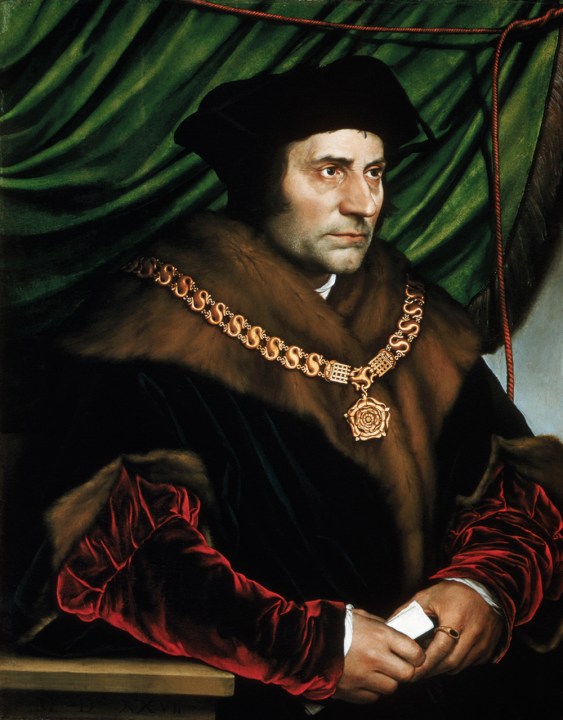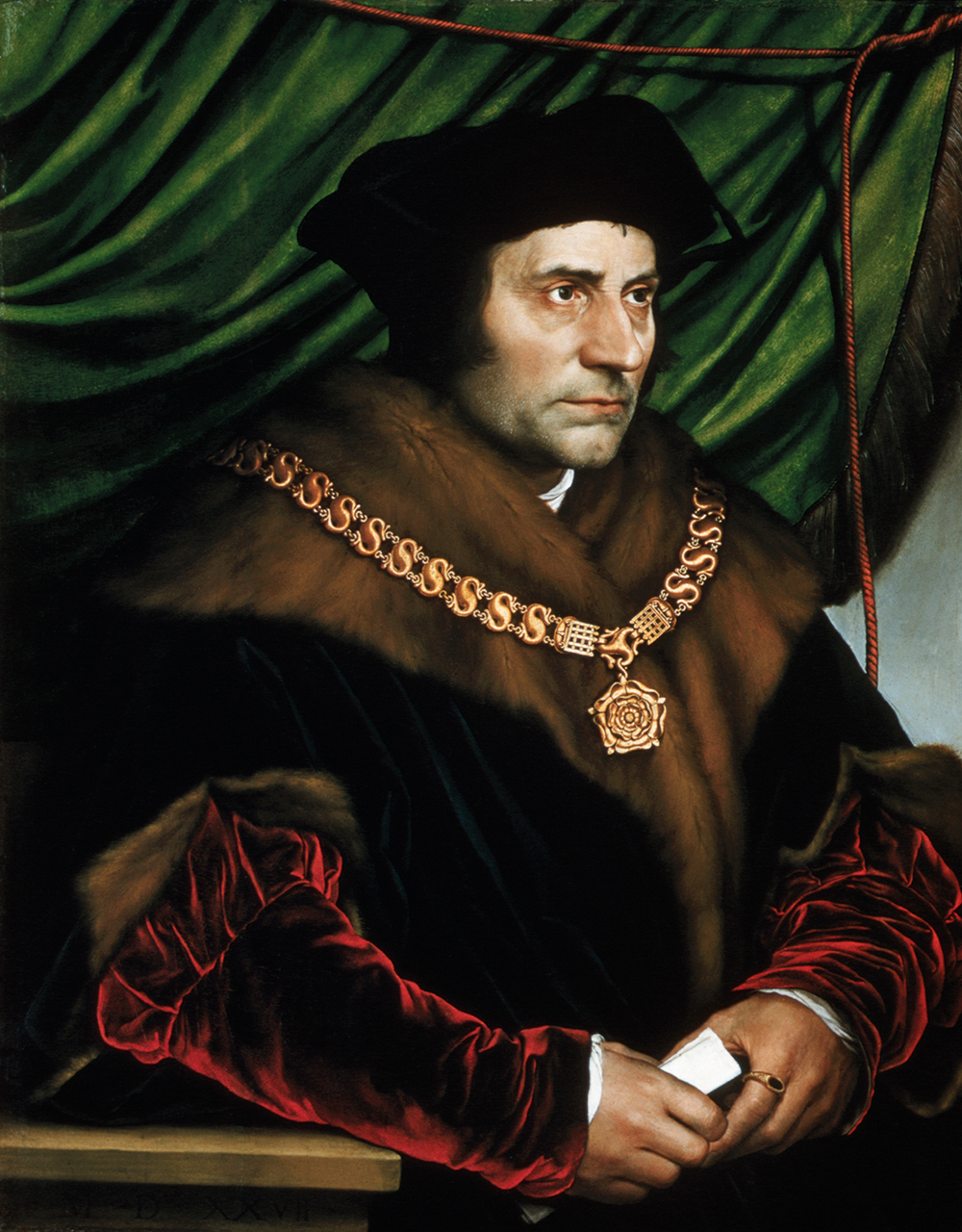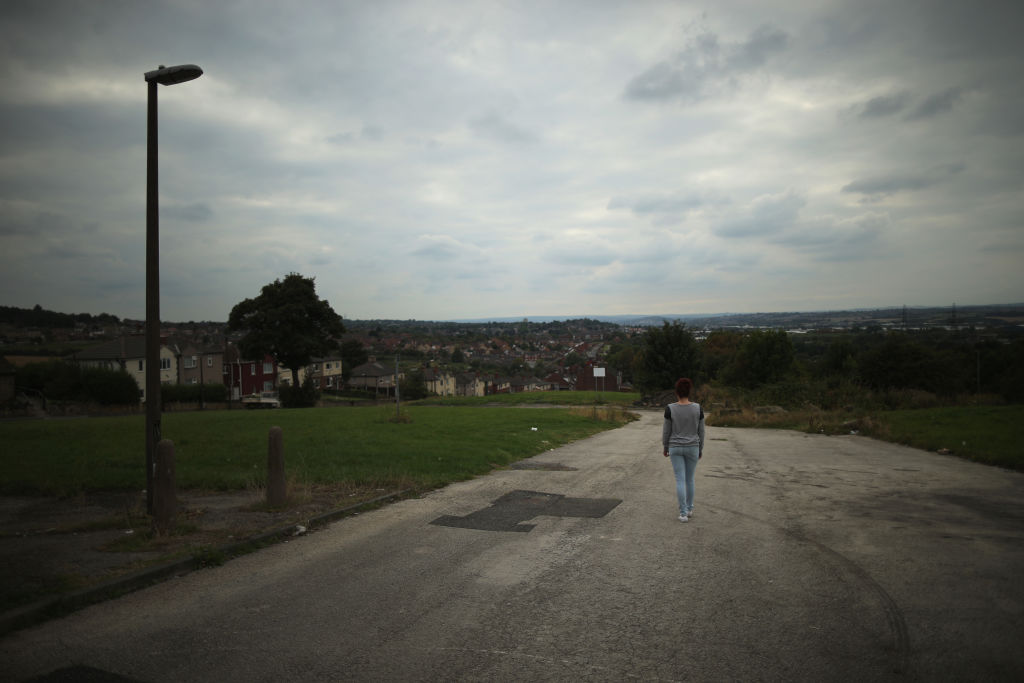
Three years ago, when memories of the final series of HBO’s Game of Thrones were still fresh, Joanne Paul published The House of Dudley, a gripping account of three generations of the Dudley family, whose efforts to seize the crown from the Tudors, as I noted in these pages, made the machinations of the Lannisters and the Starks look tame. Now, hard on the heels of the final instalment of the BBC’s adaptation of Hilary Mantel’s Wolf Hall trilogy – and with a revival of Robert Bolt’s A Man for All Seasons opening in the West End in August – Paul has published another book equally attuned to the zeitgeist.
Thomas More is a biography of the man known to posterity as both St Thomas More and Sir Thomas More, an enigmatic figure variously worshipped as a saintly martyr and vilified as a dogmatic zealot. The author of Utopia (1516), arguably the most influential work of literature by an Englishman between Chaucer and Shakespeare, More was a friend to the Dutch humanist Erasmus of Rotterdam and a patron of the German-born Hans Holbein the Younger, whose 1527 portrait of More wearing his golden chain of esses (a signifier of loyalty to the crown) is one of the most instantly recognisable images of the early 16th century.
More was one of the greatest legal minds of his generation in England. Appointed Cardinal Wolsey’s successor as Lord Chancellor in 1529, he – unlike Wolsey, who had favoured a conciliatory approach to the widening confessional divide – used the powers of his office to root out Lutherans and others he deemed guilty of heresy. In 1532, he resigned as Lord Chancellor in protest at Henry VIII’s determination to find a legal loophole by which to have his marriage to Katherine of Aragon declared null and void so that he might be free to marry Anne Boleyn. Three years later, having refused to accept the Act of Supremacy (1534), by which Henry VIII officially supplanted the Pope as head of the Church of England and God’s representative on Earth, More was beheaded for treason on Tower Hill.
For Paul, More was neither ‘a divinely inspired saint’ nor ‘a zealous prosecutor of the innocent’. Rather, he was ‘one of the few who overtly opposed the growing tyranny of Henry VIII’, doing so with full knowledge of the almost certainly deadly consequences of his actions. Yet, for all the debates about More’s legacy, the irony, according to Paul, is that he ‘did almost nothing to change the course of English history’. When the axe fell on More, in July 1535, the King and Thomas Cromwell simply removed ‘a particularly irksome pebble from their shoe as they made their determined way down the path of the English Reformation’.
There are, Paul suggests, important lessons for us all in More’s ‘willingness to stand firm and speak truth’ to power: ‘Those who are willing to destroy anyone who stands in opposition to their will – a will driven by self-interest, pride and desperate paranoia – rule today as they did 500 years ago.’ Paul astutely draws out numerous parallels between the politics of the 16th century and our own. That said, even she cannot have been prescient enough to have anticipated, when this book went to press, the extent to which her discussion of tariffs and trade wars – fuelled by the personal animosity between Henry VIII and Charles V, the Holy Roman Emperor – would resonate with recent headlines.
Paul excels at bringing the past to life in all its gory detail. Expeditions from England to the Continent were no picnic. Or, as More put it: ‘What a fine sort of fun to get seasick from being on a ship, to be battered around by its tossing, to be threatened by storms, and to have death and shipwreck continually before one’s eyes.’ Meanwhile, diseases like the sweating sickness (also known as the ‘stopgallant’, as those who fell victim to it were often young, apparently healthy, gentlemen) posed a near constant threat. Characterised by the sudden onset of a burning sensation, the sweating sickness could kill in as little as two hours. When, as was frequently the case, London found itself in the grip of an outbreak, it was safer, More observed, to be ‘on the battlefield than in the city’.
Fans of The House of Dudley – and, indeed, of Wolf Hall and A Man for All Seasons – will find much to enjoy in this immersive, richly told account of life, death, faith and politics at the early Tudor court.








Comments